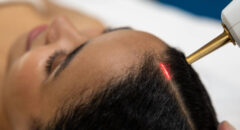
Black people have been using protective styles for years to maintain healthy hair. However, not all of these styles are as protective as they seem. When choosing a hairstyle, it helps to know what might damage your hair instead of keeping it healthy.
5 Ways Protective Styles Can Damage Your Hair
1. They Can Damage Your Edges
Protective styles can cause a lot of tension in your hair – especially when they’ve just been installed.
As a result, you feel a lot of pulling on your edges. Given how delicate that part of your hair can be, protective styles can end up damaging it to the point where some people develop a receding hairline.
2. They Can Cause Split Ends
While hiding your hair from external damage, some styles use extensions that can cause friction with your natural hair.
Over time, this can result in split ends. Since your hair is inaccessible while styled, you won’t notice the damage until the style is undone. At that point, there might be quite a bit to deal with.
RELATED: Helpful or Harmful? The Truth About “Protective” Hairstyles
3. They Can Cause Knots
Your hair will shed whether or not it’s being combed every day. In fact, it’s estimated that you shed up to 100 strands per day. That number can really grow when your hair is in a protective style for a few weeks.
The shed hair can cause a lot of knotting when it’s time to pull it out. Worse yet, if you don’t detangle your hair properly, you might lose a lot of healthy hair in the process.
4. They Can Encourage Build-Up
It’s not easy to efficiently wash your hair when you have certain protective styles installed. The buildup of oils from your scalp and any hair products you’ve used can make extensions even heavier and increase the likelihood of damage. Continued build-up can also hurt your scalp.
5. They Can Cause Breakage
With the combination of friction and the build-up of products, protective styles can easily cause breakage.
It might not be easy to see the difference between shedding and breakage when undoing your protective style either. You’ll usually notice when








